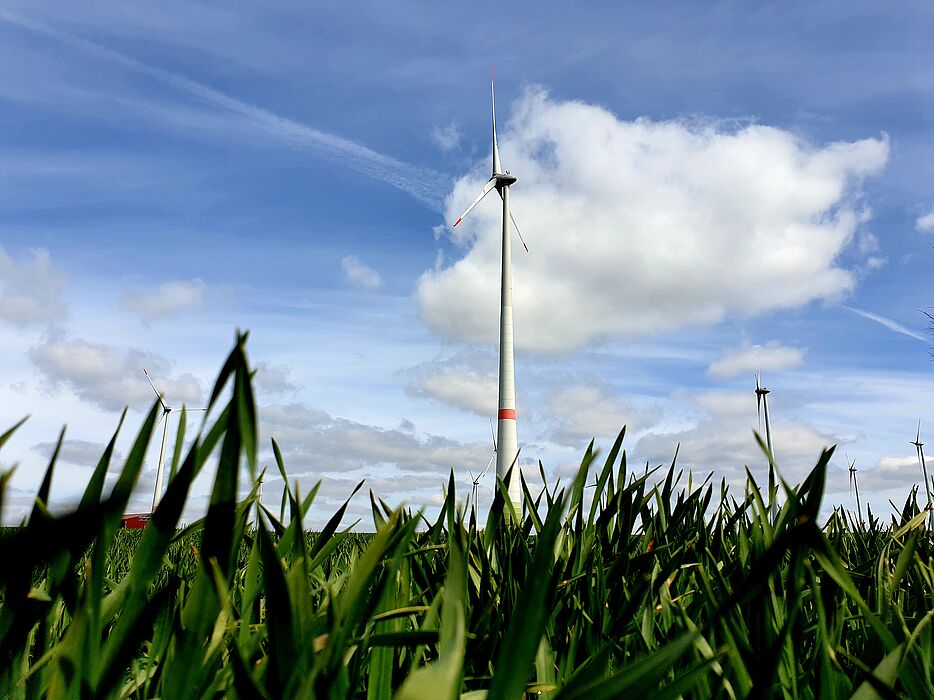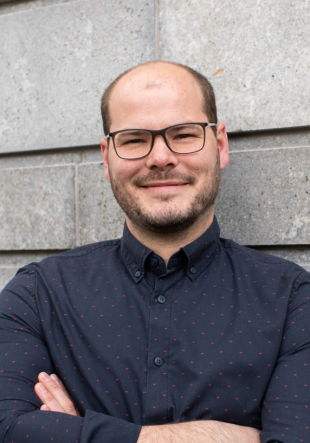Energy systems of the future: Paderborn scientists research modern and sustainable concepts of energy generation, distribution and use
Infectious diseases and failure in the fight against climate change: according to the World Economic Forum's World Risk Report 2021, these are the most consequential threats to our planet. The Corona pandemic and current environmental stresses are sometimes closely linked: Although Germany achieved almost all its climate targets last year - without the lockdowns it would have missed them, warned the Federal Environment Agency. In order to meet the global challenges of climate change and the energy transition, scientists at the Institute of Electrical Engineering and Information Technology at the University of Paderborn are researching innovative solutions. Their work on sustainable concepts for energy generation, distribution and use illustrates how closely the energy transition and electrical engineering are intertwined.
Future-oriented solutions: regional and regenerative
"Sustainable energy concepts must be implemented worldwide, because people consume energy worldwide. Nevertheless, the energy turnaround is taking place primarily regionally," says Prof. Dr.-Ing. Henning Meschede, head of the Department of Energy Systems Technology (EST). Just think of the use of e-cars or the demand for heat. The use of renewable energies also varies from region to region, he adds.
"Cross-national networking will be an essential component of future sustainable energy concepts, yet a look at the individual regions must not be missed," says Meschede, who studies how renewable energies can be used as efficiently as possible at the University of Paderborn. "Regional renewable energy systems are particularly important when it comes to expanding generation capacities, energy distribution systems and implementing sector coupling concepts. For example, when regeneratively generated electricity from the region is used for regional heat supply," explains the scientist. "In order to limit the direct and indirect consequences of climate change, such as drought, flooding or climate migration, our energy use must be completely converted to renewable energies such as wind or solar energy as quickly as possible - not only electricity, but also heat supply and transport," Meschede emphasises.
Power electronics for the energy revolution
For modern concepts of energy generation, distribution and use, power electronics is a key technology without which the integration of renewable energies can hardly succeed, explains Prof. Dr.-Ing. Joachim Böcker, head of the Power Electronics and Electrical Drive Engineering (LEA) department. "There is not only one form of electrical energy, but every consumer needs a suitable electrical supply," he describes. "This concerns both the level of voltage and the question of DC or AC voltage. Energy generators also generate electrical energy of very different types: photovoltaic systems supply DC voltage, wind turbines AC voltage, but unfortunately not the frequency that matches the AC voltage power grid. For energy transmission and distribution, on the other hand, 50Hz high-voltage grids are predominant. In addition, there are more and more high-voltage direct current transmissions, e.g. to connect offshore wind power plants or to link the German and Norwegian electricity grids via submarine cables," Böcker explains.
All these transformations of electrical energy types - whether for LEDs or the motor of an electric car - are made possible today by power electronics. The conversion practised in the past by means of large and expensive rotating machine sets is thus obsolete. "Power electronics not only manage these tasks with previously unimaginably high efficiencies, often in the range of 96 to 99 per cent, but also offer the possibility of controlling the flow of energy in a targeted manner, thereby creating the prerequisite for intelligent energy systems," Böcker continues.
Smart interfaces
But the requirements are increasing: Intelligent energy systems are needed to use renewable energies as efficiently as possible. Information about generation capacities, energy demand, plant and grid conditions should be recorded transparently and continuously in order to be able to operate the system optimally. The core element here is the expansion of measurement technology. "In order to use renewable energies in an economically and ecologically advantageous way, it is important that an intelligent energy system covers all areas from generation to distribution and use. This therefore also includes the areas of heat and mobility," says Meschede. Sector coupling concepts, i.e. the interlinking of these individual areas, are therefore an essential component of an intelligent energy system.
Considerable need for action
The two scientists agree that the focus on renewable energies has so far been too much on the electricity sector. Here, renewable energies could be used comparatively easily. They assume that electricity will play an even greater role in the course of the energy transition, for example through e-mobility. With regard to the other sectors, however, there is still a clear need for action: "More than one fifth of the final energy demand in Germany is used for the provision of process heat in industry and commerce - often provided by fossil fuels. The supply of space heating and the transport sector also have high shares. So, in addition to the electricity transition, the heat and transport transition are also part of sustainable energy concepts," says Meschede. In times of the Corona pandemic, the focus is on many other problems, but the scientist emphasises: "The challenge of climate change remains and cannot be postponed.
Limiting global warming is a project for society as a whole, Meschede affirms, which goes beyond the technical dimensions: For social analyses, ecological impact assessments or research into new materials, expertise from mechanical engineering, computer science and the natural, economic and social sciences must also be included. "Without interdisciplinary networking and cooperation, neither the task of energy transition nor limiting global warming will succeed," concludes the Paderborn scientist.
Helping to shape the energy transition at the Institute of Electrical Engineering and Information Technology
Electrical engineering is part of the solution to many current social challenges. At the Faculty of Electrical Engineering, Computer Science and Mathematics at the University of Paderborn, scientists are researching new concepts and students can also find various offers here that focus on the topic of the energy transition.
Scientists in the recently established field of "Energy Systems Engineering" (EST) research regional renewable energy systems and deal with industrial and commercial sector coupling concepts as well as data analyses in the context of renewable energy systems. The interdisciplinary research work interfaces in particular with mechanical engineering, computer science and the natural, economic and social sciences. Further information on the new Department of Energy Systems Engineering: ei.uni-paderborn.de/est.
In the field of "Power Electronics and Electrical Drive Technology" (LEA), scientists conduct research on the topics of power electronics, electrical drive technology and intelligent energy systems. Much of the research work takes place in cooperation with industrial partners. Since this summer semester, the department has been offering the Master's course "Power Electronics for the Energy Transition". Further information on the Department of Power Electronics and Electric Drive Technology: ei.uni-paderborn.de/lea.



